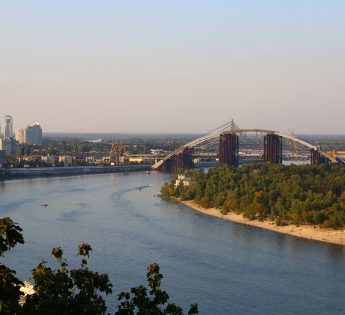
Corruption Memorials
Four years after the end of the Euromaidan protests in Kiev in 2014, which cost 100 human lives, people in Ukraine are still coming to terms with what happened. According to Pavlo Petrenko, the current Ukrainian minister of justice, Viktor Yanukovych and his cronies embezzled around 40 billion USD from the state budget during his four years in office. The biggest reminder of this corruption is the former estate of the president, who ultimately fled the country. Yanukovych lived like the Sun King in Versailles on an area half the size of New York’s Central Park that included hunting grounds, golf course, antique car collection, yacht harbour, zoo, and dog breeding facility. Today the estate is open to visitors.
Four years on since Euromaidan, corruption is still a major problem in Kiev. Despite this, Ukraine has undergone fundamental changes since 2014. A stronger and more confident civil society is working tirelessly to uncover and prevent corruption in the capital and the regions.

The Anti-Corruption Walk in February 2018 with Rebecca Harms (MEP)
One example is ‘Anti-Corruption Walks Kyiv’, a project run by CISS and the Anti-Corruption Research and Education Centre of the National University of Kyiv-Mohyla Academy. The initiative came from a Ukrainian-German youth exchange in 2017 and saw the development of an alternative concept for city tours. Inspired by the Berlin ‘LobbyControl’ tours and the anti-corruption tours in Bogotá and Mexico City, researchers and activists take small groups on guided tours through Kiev in Ukrainian or English. The specific mechanisms of corruption are explained using factual case studies and stories. The tours help people to better understand corruption and anti-corruption measures.
Participants are taken to some of the most important memorials of corruption. One of these is the Parkowy Business Centre, better known by locals as ‘Yanukovich’s helipad’. To shorten his commute, the former president had a helicopter landing pad, complete with business center, constructed in 2010 on a perfect hillside not far from the parliament in the middle of a protected UNESCO world heritage site. Yanukovich only landed there a few times, but the official after show party of the Eurovision Song Contest was held here in May 2017. Yanukovich’s cronies who control the building through a series of shell companies netted 50,000 USD from the state budget for this party. Only after enormous public pressure was the building nationalised without further ado at the end of 2017. An investigation into the precise circumstances of the construction has not yet been announced.
‘Yanukovich’s helipad’ is a stop on the anti-corruption tour and symbolises the corruptness of the former regime. At the same time, the case shows how hard the new government is working to clean up old corruption. On the positive side, the tours also demonstrate the progress being made in the fight against corruption. This includes the creation of a new independent investigative authority, digital asset declarations by politicians and civil servants, and a digital platform for public procurement (ProZorro).
Many citizens, tourists, and experts have already taken the regular tours. For example, Rebecca Harms, Member of the European Parliament, went on a tour at the end of February 2018. The project has attracted strong media interest in Ukraine.
In 2018, Ukrainian and German activists plan to develop tours for Ukrainian schoolchildren and students and also expand to Odessa, Kharkiv, and Lviv. Despite the slow progress, many activists are far from ready to give up on the fight against corruption.
This article was published in April’s issue of the Diplomatic Magazine.
